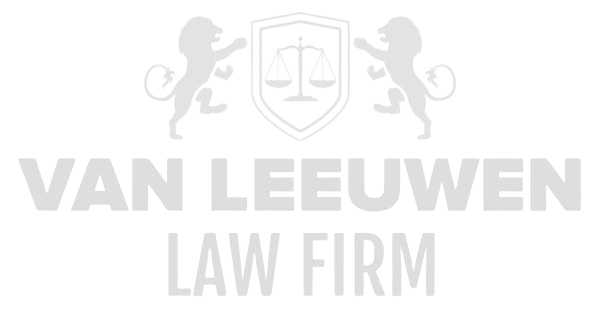The insurance sector represents one of the most essential pillars of the modern economy, where financial security and societal stability converge in a unique manner. Over the centuries, the role of insurance has evolved from simple mutual assistance to a sophisticated system of risk management, financial planning, and societal protection. The core principle, however, remains unchanged: spreading risks across a large group of individuals and businesses, making unforeseen financial losses manageable and supporting economic continuity. This principle forms the backbone of financial security, as it is not merely a tool for individual protection but a foundation for trust in economic transactions, investments, and entrepreneurship. The insurance sector creates a safety net that renders risks manageable, allowing businesses to invest, individuals to plan their lives, and societies to absorb unexpected shocks such as natural disasters or pandemics. Essentially, the sector provides more than a contractual promise of financial compensation; it delivers societal resilience and structural stability, enabling a wide range of economic and social activities to continue uninterrupted.
The dynamic nature of the insurance sector means it is constantly confronted with a spectrum of challenges and opportunities that extend the boundaries of traditional risk management. The rise of technological innovations, shifting demographic structures, and global climate challenges demand a redefinition of strategies and products. At the same time, globalization requires businesses and consumers to navigate a complex web of regulations, where local and international standards intersect, and compliance demands high precision and insight. Innovations within insurtech illustrate how technology can radically transform insurance practices, from automated claims processing to dynamic premium calculations based on real-time data. Moreover, the evolving landscape of climate-related insurance compels insurers to think proactively, conduct scenario analyses, and meticulously plan financial reserves. Customer expectations are shifting as well, emphasizing transparency, speed, and customization, putting traditional sales and service models under pressure. The sector thus operates at the intersection of technology, law, science, and human behavior, requiring a highly nuanced understanding of risks and financial structures.
Structure and Functioning of the Insurance Sector
The structure of the insurance sector is a complex ecosystem, composed of a wide array of products, services, and organizational layers that are closely interlinked. At its core lies the distinction between life insurance and non-life insurance, each with unique objectives, risks, and customer segments. Life insurance primarily focuses on providing financial security in the event of death or long-term illness and serves as both protection and wealth accumulation. Non-life insurance, on the other hand, is designed to cover material losses and liability risks, operating in an environment where statistical probabilities and claims histories are central. Both segments share the fundamental principle of risk pooling, where premium income from a broad population is used to cover the unforeseen expenses of a few.
The operation of an insurance company relies on a delicate balance between risk acceptance and financial management, with the insurance policy forming the legal and financial foundation. This contract specifies in detail the coverage, exclusions, obligations, and premiums, establishing the mutual rights and responsibilities of insurer and policyholder. Actuarial science plays a central role, quantifying risks and developing models to predict the probability and financial impact of claims. These models are essential for the solvency and operational continuity of the company. The process of premium calculation, risk assessment, and reserve planning requires continuous analysis of historical data, demographic trends, and economic forecasts to maintain a balance between profitability and policyholder protection.
Within this structure, every department and function plays a crucial role. Risk management teams identify potential exposures and develop mitigation strategies, while legal and compliance departments ensure adherence to laws and regulations. Customer service and claims departments translate the abstract principles of risk pooling into tangible service, handling claims efficiently and fairly. This integration of diverse disciplines creates complex but highly coherent organizations in which scientific precision, legal certainty, and customer focus converge to ensure financial stability.
Risk Management and Actuarial Science
Risk management in the insurance sector is a systematic, multidimensional process that focuses on identifying, evaluating, and controlling both known and unforeseen risks. Actuarial science forms the core of this process, providing complex statistical models and predictive analyses that are essential for financial planning. Actuaries study extensive datasets, including historical claims, demographic data, and economic indicators, to identify trends and patterns that influence future risk exposure. Their work underpins premium setting, reserve allocation, and strategic decision-making that safeguards financial stability.
Beyond quantifying financial risks, risk management plays a proactive role in anticipating extreme events and new forms of uncertainty. Scenario analysis, stress testing, and sensitivity analysis provide insights into the resilience of an insurance portfolio under exceptional circumstances. Climate change, cyber threats, and geopolitical shocks are increasingly integrated into modeling of future risks. The ability to translate these complex scenarios into practical and financially responsible strategies distinguishes successful insurers from their competitors.
Actuarial and risk management practices are closely linked to governance and compliance. Financial models and analyses must be transparent, verifiable, and audit-proof, giving regulators assurance of the company’s solvency and resilience. These practices also form the foundation for strategic decisions in product development, pricing, and portfolio management, enabling insurers to remain profitable while offering reliable protection to policyholders.
Insurance Products and Services
The diversity of insurance products reflects the wide-ranging needs and risks of individuals and businesses. Life insurance, including term life, whole life, and universal life policies, provides not only financial security upon death but also functions as investment, wealth accumulation, or retirement planning tools. These products are designed to combine flexibility with certainty, allowing clients to align their financial planning with personal circumstances, life stages, and risk appetite. The complexity of these products demands deep expertise in actuarial calculations, tax law, and market developments to ensure an optimal balance between returns and protection.
Non-life insurance covers material and liability risks, with a broad range of products such as auto insurance, homeowners and property insurance, and commercial liability insurance. Each product type is tailored to specific risks and claims patterns, with premiums and coverage meticulously calculated based on statistical analyses and historical data. Operational execution requires an integrated approach, coordinating loss prevention, claims assessment, and customer communication to limit financial losses and maximize client satisfaction.
Specialized insurance products, such as health, professional liability, and cyber insurance, reflect the increasing complexity of modern risks and the demand for customized solutions. Health insurance covers medical expenses, contributing to societal health and well-being, while professional liability protects against claims of errors or negligence in professional practice. Cyber insurance protects businesses against data breaches, system failures, and other digital threats, requiring a combination of technical expertise, legal knowledge, and risk assessment to function effectively.
Regulation and Compliance
The insurance sector operates within a tightly regulated framework designed to ensure financial stability, transparency, and consumer protection. Regulators set requirements for capital reserves, solvency, and reporting, ensuring that insurance companies can meet obligations and maintain sustainable operations. Regulation covers product approval, financial reporting, conduct standards, and customer communications, creating a complex environment that demands deep knowledge and continuous monitoring.
Compliance extends beyond financial norms to encompass ethics, data protection, and fraud prevention. Companies are responsible for processing personal data correctly, ensuring privacy, and preventing misuse of services. This aspect has become especially critical in the era of digital insurance, where large volumes of data are collected, analyzed, and used to personalize products and services. Adherence to laws and regulations is therefore not only a legal obligation but a crucial part of risk management and reputation preservation.
Governance plays an essential role in sector integrity. Boards and senior management must make strategic decisions that are financially responsible and ethically sound. Oversight of risk management, actuarial analyses, and compliance processes ensures that a company remains profitable, stable, and reliable even under exceptional circumstances.
Innovation and Future Developments
The future of the insurance sector is largely defined by technological advancement, evolving customer needs, and societal trends. Digital platforms, artificial intelligence, machine learning, and blockchain offer unprecedented opportunities to optimize processes, evaluate risks more accurately, and personalize customer interactions. Predictive analytics enables insurers to make real-time decisions, calculate dynamic premiums, and proactively suggest preventive measures, enhancing both efficiency and client satisfaction.
Innovation extends beyond technology; sustainability and corporate social responsibility are becoming increasingly critical. Climate change, environmental legislation, and social accountability influence product development, risk management, and investment strategies. Insurers must develop scenarios that account for extreme weather, environmental degradation, and social trends, integrating these into portfolio management and pricing.
The combination of technological progress and social responsibility will fundamentally reshape the insurance sector in the coming decades. The emphasis will shift from standard products to personalized, flexible solutions that provide both financial security and sustainability. This evolution requires continuous alignment of scientific methods, legal frameworks, and operational processes, enabling the sector to effectively fulfill its core function of protection and risk management in an increasingly complex world.
Financial and Economic Crime
The insurance sector occupies a pivotal position in the global economy, functioning as both a shield against financial risk and a conduit for economic stability. By providing protection to individuals, businesses, and institutions, the sector mitigates the impact of unforeseen events, ranging from property damage to personal injury or health crises. The range of insurance products—spanning life insurance, property insurance, and health insurance—reflects the breadth and complexity of modern risk management. Yet, despite its essential role, the sector is constantly exposed to financial and economic crime. These criminal activities can take many forms, including fraud, money laundering, corruption, and unethical practices, all of which are compounded by the intricate web of regulations that govern the sector. The capacity to identify, prevent, and respond to such crimes is therefore not merely operational but strategic, requiring a sophisticated understanding of law, finance, and human behavior, as well as the implementation of robust internal controls.
The implications of financial and economic crime in insurance are profound. Beyond the immediate monetary loss, these crimes can destabilize the market, erode trust, and compromise the integrity of institutions. Companies face heightened scrutiny from regulators, legal authorities, and the public, creating a landscape in which rigorous risk assessment and proactive measures are indispensable. It is not sufficient merely to comply with regulations; insurers must cultivate a culture of integrity, leverage cutting-edge technology for detection and prevention, and maintain rigorous oversight over all operations. In this sense, combating financial crime is inseparable from the broader responsibility of sustaining the sector’s credibility, operational soundness, and social relevance.
1. Insurance Fraud
Insurance fraud represents one of the most prevalent and damaging forms of financial crime in the insurance sector. Fraud can manifest as falsified claims, intentional property damage, exaggeration of losses, or the provision of misleading information during policy applications. The consequences are substantial, imposing direct financial burdens on insurers and indirect costs on all customers through increased premiums. Moreover, instances of fraud can trigger legal consequences, reputational damage, and the erosion of consumer trust, highlighting the necessity for a proactive and comprehensive approach to fraud management.
A concrete illustration of insurance fraud occurs when an individual deliberately damages their property to submit a claim and receive compensation. Fraud may also involve overstating the value of losses or filing claims for non-existent damage. The financial and operational impact is substantial, requiring insurers to deploy robust fraud detection systems. Tools such as advanced data analytics, internal controls, verification protocols, and behavioral monitoring are essential. Furthermore, training employees to recognize and prevent fraudulent behavior and fostering a culture of integrity are central pillars of an effective fraud prevention strategy.
The strategic response to insurance fraud requires continuous vigilance and adaptation. Insurers must anticipate evolving schemes, assess vulnerabilities, and align operational practices with regulatory expectations. This includes monitoring emerging patterns, sharing intelligence across the industry, and developing responsive procedures that safeguard both the company’s finances and the trust of policyholders. Fraud management is not a static measure but an ongoing operational priority, integrating technology, legal oversight, and human judgment into a cohesive framework.
2. Money Laundering Through Insurance Products
Insurance products can, intentionally or unintentionally, serve as instruments for money laundering, exploiting the complexity and flexibility of certain financial instruments. Criminals may use life insurance policies, annuities, or large premium payments to inject illicit funds into the legitimate financial system. Such activities expose insurers to significant legal, operational, and reputational risks while attracting scrutiny from regulators tasked with enforcing anti-money laundering (AML) requirements.
A practical example involves a client investing substantial sums in a life insurance policy using illegally obtained funds. Through structured payments and eventual disbursement, illicit money may appear legitimate, “cleaned” by the mechanisms of the insurance policy. Combating this type of financial crime necessitates rigorous compliance programs, including customer due diligence (KYC), transaction monitoring, and the reporting of suspicious activity to authorities. Strong internal controls and the integration of sophisticated monitoring technologies are critical for detecting and preventing such laundering schemes.
Effective prevention also requires a strategic, system-wide approach. Insurers must cultivate a culture of regulatory vigilance, continuously updating processes to reflect evolving typologies of laundering, ensuring that compliance personnel are well-trained, and integrating AML practices into every stage of the product lifecycle. The combination of proactive surveillance, employee awareness, and robust technological solutions is essential to mitigate the risk of insurance-facilitated money laundering.
3. Corruption and Unethical Practices in Insurance Claims
Corruption and unethical behavior within insurance claims undermine both the financial and moral integrity of the sector. Practices may include bribery, manipulation of claim processes, favoritism, or conflicts of interest. Such behaviors can result in unauthorized payouts, legal sanctions, and significant reputational damage, highlighting the need for ethical vigilance and procedural transparency.
A concrete instance occurs when an insurance agent receives a bribe from a claimant to expedite the approval of a claim, even if the claim is unjustified. Similarly, corruption can emerge when employees favor certain clients or manipulate internal procedures to benefit select parties. Prevention strategies involve implementing transparent operational procedures, adhering strictly to ethical standards, fostering organizational integrity, and establishing whistleblower mechanisms. Staff training and proactive monitoring are essential to identify and address both active and potential misconduct.
The broader implication of corruption is the erosion of trust and systemic vulnerability. Unchecked unethical behavior not only exposes insurers to financial loss but also undermines confidence in the sector as a whole. Effective anti-corruption programs must integrate legal oversight, internal controls, and ethical training to create an organizational culture where integrity and accountability are foundational principles.
4. Complexity and Compliance with Regulations
The insurance sector operates within a multifaceted regulatory framework encompassing local, national, and international legislation. Insurers must comply with laws covering financial reporting, consumer protection, data privacy, and anti-money laundering obligations. Non-compliance can result in substantial fines, legal sanctions, and severe reputational harm.
An illustrative example of compliance complexity is adherence to data protection regulations such as the General Data Protection Regulation (GDPR). Insurers must ensure the secure handling of sensitive customer information while implementing procedures to prevent breaches. Comprehensive compliance programs, regular internal and external audits, staff training, and continuous monitoring of regulatory updates are necessary to manage compliance risk. Developing clear policies and operational guidelines is essential for embedding compliance into everyday business activities and maintaining both regulatory and public confidence.
Regulatory compliance is not merely a matter of meeting minimum legal standards; it requires strategic foresight and continuous adaptation. Insurers must integrate regulatory obligations into business processes, anticipate shifts in legal landscapes, and cultivate a culture where compliance is a shared responsibility across all levels of the organization.
5. Fraud in the Insurance Sector by External Parties
Fraud perpetrated by external actors, including organized crime networks and opportunistic fraudsters, poses a critical threat to the insurance sector. These schemes often exploit systemic vulnerabilities, use complex networks to submit fraudulent claims, and attempt to secure unauthorized payouts. The financial, operational, and reputational consequences can be severe, demanding strategic coordination to mitigate risks effectively.
A tangible example is an organized crime group submitting falsified claim documents to multiple insurers to obtain large-scale payouts. This may involve creating fake identities, fabricating supporting documentation, or manipulating procedural loopholes. Effective countermeasures include collaboration with law enforcement agencies, implementation of advanced fraud detection and prevention systems, and meticulous due diligence when evaluating claims and client backgrounds.
Preventing external fraud is an ongoing strategic challenge. Insurers must combine technological innovation, regulatory compliance, and intelligence-sharing with a proactive corporate culture. This ensures the sector can respond decisively to emerging threats while safeguarding both financial stability and public trust.
6. Cybersecurity and Protection of Customer Data
Insurance companies process extensive volumes of sensitive data, including personal, financial, and medical information. This exposure makes them attractive targets for cyberattacks, which can result in data breaches, financial losses, and reputational damage. Safeguarding customer data is therefore a core aspect of risk management in the modern insurance industry.
An example of a cybersecurity threat is the vulnerability of systems due to unpatched software or insecure networks, which may lead to unauthorized access and theft of confidential customer information. Effective cybersecurity management involves comprehensive measures such as encryption, system updates, employee awareness training, and regular security audits. Developing a robust incident response plan is also essential to identify vulnerabilities, mitigate damage, and ensure operational resilience.
In conclusion, financial and economic crime in the insurance sector requires a multidimensional strategy that integrates legal, operational, technological, and ethical measures. From internal fraud and corruption to external criminal threats and cyber risks, insurers must maintain vigilance, implement robust controls, and cultivate a culture of integrity to protect their clients, their organizations, and the sector as a whole.
Privacy, Data, and Cybersecurity
The insurance sector, as a central pillar of risk management and financial protection, operates in an environment increasingly defined by technological reliance and the handling of vast amounts of sensitive data. Insurers collect and process personal, financial, and medical information to assess risk accurately, manage claims efficiently, and develop products tailored to clients’ needs. This centrality of data makes the sector a high-value target for cybercriminals and places a profound responsibility on insurance companies to safeguard privacy and ensure data security. Compliance with regulatory frameworks, protection against malicious threats, and proactive management of internal and external vulnerabilities are no longer optional but fundamental to maintaining both operational integrity and public trust.
The complexity of these challenges is compounded by the rapid evolution of cyber threats and technological advances, which create a continuously shifting landscape for insurers. Breaches in privacy or data security can have severe financial, operational, and reputational consequences, including regulatory sanctions, legal liabilities, and loss of customer confidence. In this context, insurers must integrate technical, organizational, and human-centric strategies to mitigate risks. A multi-layered approach, encompassing advanced cybersecurity measures, robust compliance programs, and a culture of awareness, forms the foundation for protecting the sector against evolving threats in privacy, data, and cybersecurity.
1. Protection of Customer Data and Personal Information
Insurance companies manage an extensive spectrum of sensitive personal data, including identification details, financial information, medical records, and claims histories. This data represents both a critical operational resource and a high-value target for cybercriminals seeking to commit identity theft, fraud, or other exploitative acts. The challenge lies in securing this information against unauthorized access, data leaks, or malicious manipulation, while simultaneously ensuring that it remains accessible for legitimate business purposes.
A concrete example of this challenge is a potential data breach exposing thousands of customer records due to cyberattacks or internal lapses. Such breaches can result in significant financial loss, legal exposure, and reputational harm. Insurers must implement stringent security measures, including robust encryption for data at rest and in transit, strict access control protocols, multi-factor authentication, and periodic security audits. Compliance with global regulations, such as the GDPR in Europe or the CCPA in the United States, is also imperative to protect both the organization and its customers.
Effectively managing this risk requires a holistic approach. Technical safeguards must be complemented by comprehensive policies, staff training, and regular testing of security systems. A proactive mindset, continuous monitoring, and timely adaptation to emerging threats are essential to prevent breaches and preserve the trust of clients and stakeholders.
2. Security of Claims and Insurance Systems
Claims processing and policy administration systems form the operational backbone of insurance companies. These systems manage sensitive and mission-critical information, including claim documentation, damage assessments, and policy records. The security of these systems is crucial to maintaining operational integrity and customer confidence.
A clear illustration of this challenge is the threat posed by ransomware attacks, which can lock access to claims data and disrupt operations extensively. To mitigate these risks, insurers must deploy advanced technical solutions, including intrusion detection systems (IDS), firewalls, secure system updates, and regular penetration testing. Developing robust incident response plans ensures rapid recovery and limits the operational impact of such attacks.
The protection of claims and insurance systems also requires continuous vigilance and integration of cybersecurity best practices into everyday workflows. Operational resilience is achieved not merely through technology but through coordinated procedures, staff training, and a proactive culture of security.
3. Protection Against Identity Theft and Fraudulent Claims
The insurance sector is inherently vulnerable to identity theft and fraudulent claims. Cybercriminals often attempt to exploit systems to file false claims or gain unauthorized access to sensitive information. Identifying and preventing these threats is a constant operational and strategic challenge for insurers.
A tangible example of this challenge occurs when criminals use stolen identities to submit fraudulent claims, attempting to obtain illegitimate compensation. Preventing such incidents requires the deployment of advanced data analytics, artificial intelligence, and machine learning systems to detect anomalous patterns. Strong verification protocols, employee training, and continuous monitoring are crucial to detecting and mitigating fraudulent activities effectively.
Beyond technical safeguards, organizations must cultivate awareness and integrity among staff. Ensuring that employees can recognize suspicious behavior and respond appropriately is as important as technological defenses in preventing identity theft and fraud.
4. Regulatory Compliance and Adherence
Insurance companies must navigate a dense regulatory landscape encompassing data privacy, security, and customer protection requirements. Key legislation includes GDPR, HIPAA, and other national and international frameworks that dictate the collection, storage, and processing of personal data. Non-compliance can result in substantial fines, legal consequences, and reputational damage.
A concrete example is the requirement to meet GDPR standards for data protection. Failure to comply may expose insurers to significant penalties and legal liability. Implementing comprehensive compliance programs—including privacy policies, data protection impact assessments (DPIAs), internal audits, and continuous monitoring—is critical for adherence to these regulations. Detailed documentation and reporting mechanisms further ensure accountability and transparency.
Compliance is not a one-time effort; it is an ongoing process requiring awareness, adaptation, and integration into all aspects of operations. Insurers must anticipate regulatory changes, train staff continuously, and maintain robust internal controls to remain compliant while safeguarding sensitive data.
5. Security of External Partner Relationships and Third-Party Services
Collaboration with external partners and third-party service providers introduces additional cybersecurity risks. Data shared with vendors for claims management, IT support, or customer service must be protected against breaches and misuse. The security of these relationships is crucial to maintaining the overall integrity of the insurance ecosystem.
An illustrative example is the vulnerability of an external IT service provider whose systems are exploited by cybercriminals, leading to a potential data breach. Insurers must implement stringent contractual agreements, data protection agreements (DPAs), and security assessments for all third-party providers. Risk analyses and the application of security standards for external services are vital to safeguarding sensitive information shared across organizational boundaries.
Effective management of third-party risk requires continuous oversight, collaboration, and enforcement of strict security protocols. Insurers must integrate these measures into vendor management practices to ensure that data remains secure throughout the value chain.
6. Security of Cloud and Digital Platforms
Cloud computing and digital platforms offer scalability and operational flexibility but introduce security risks that require careful mitigation. Protecting applications and data stored in cloud environments is critical to preventing unauthorized access and data leakage.
A concrete example is the potential for data exposure due to vulnerabilities in a cloud service provider’s infrastructure. Insurers must select reputable providers adhering to industry standards such as ISO 27001, implement strong encryption for data in transit and at rest, enforce secure access policies, and conduct regular audits. Regular risk assessments and the development of a comprehensive cloud security strategy are essential to maintaining data confidentiality and integrity.
7. Protection Against Cyberattacks and Malware
Cyberattacks, including ransomware, phishing, and malware, pose significant threats to insurance companies. Such attacks can compromise sensitive information, disrupt operations, and inflict substantial financial damage.
An illustrative example is a ransomware attack encrypting claims and customer data, demanding a ransom for restoration. Insurers must implement multi-layered defenses, including antivirus software, firewalls, intrusion prevention systems (IPS), and regular data backups. Incident response plans and continuous employee cybersecurity training are critical for mitigating the impact of attacks and ensuring rapid recovery.
8. Security of Internal Systems and Networks
Internal systems and networks must be protected against both internal and external threats. Employees or contractors with access to sensitive data may inadvertently or deliberately misuse it, creating vulnerabilities.
A specific example is an employee improperly sharing customer information due to inadequate internal controls. Insurers must implement network segmentation, strong authentication, access controls, and conduct regular audits of internal systems. Continuous monitoring and strict oversight are essential to mitigate internal security risks effectively.
9. Employee Awareness and Training
Employees are the first line of defense in protecting data and systems. Human error remains a significant vulnerability in cybersecurity, requiring ongoing training and awareness programs.
A concrete example is an employee falling victim to a phishing email, inadvertently exposing sensitive data. Comprehensive training, simulations, and knowledge assessments help cultivate a security-conscious culture and ensure that staff can recognize and respond appropriately to cyber threats.
10. Security of Data During Transmission and Storage
Ensuring data integrity and security during transmission and storage is critical for insurers. Data must be protected against unauthorized access, corruption, or loss at all stages of processing.
A specific example is the risk of data loss during transfer between internal systems or external partners. Insurers must implement encryption, secure transfer protocols, and regular backups. Developing clear data management policies and performing routine security checks are essential for maintaining the integrity, availability, and confidentiality of customer information.
In conclusion, privacy, data protection, and cybersecurity are integral to the operational resilience of the insurance sector. Effective management requires a combination of technical safeguards, regulatory compliance, internal controls, and employee vigilance. A multi-faceted and proactive approach is essential to safeguard sensitive data, maintain trust, and uphold the integrity of the insurance industry in an era of increasing digitalization and cyber threats.














